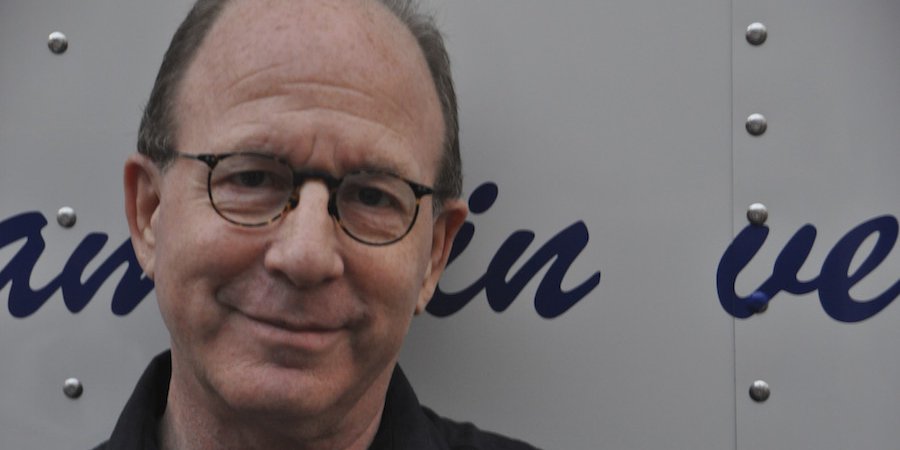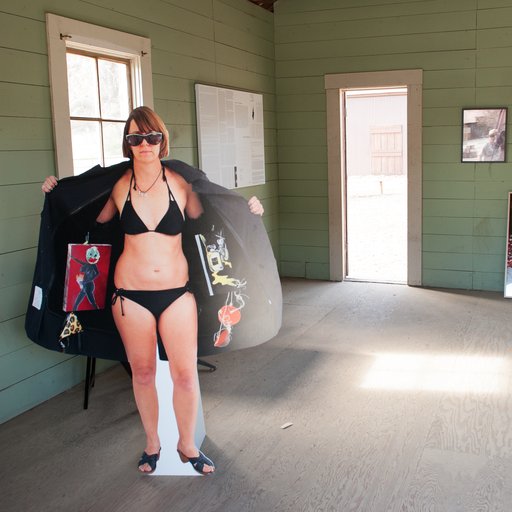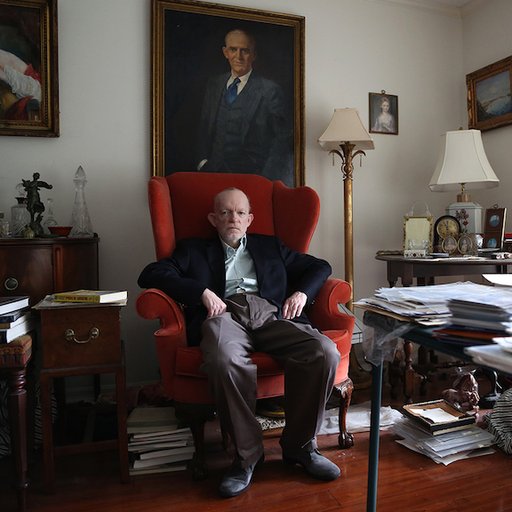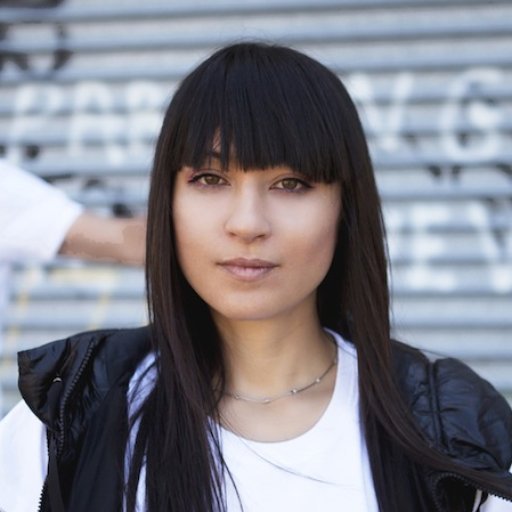In the years since New York magazine art critic Jerry Saltz began running his tremendously popular Facebook feed, he's made it a signal forum in the contemporary art conversation—a place where art-lovers (and haters) can gather around the tangy images he posts and kibitz. For a long time these images consisted of recent artworks and art-world satire intermixed with masterpieces from previous eras, including a smattering of erotic imagery from the ancient world—for instance, antique equivalents of dick pics—that served as reminders that underneath the high-faluting convolutions of the art discourse we’re all mortal creatures born and mired in sex.
Then, about a year ago, a new visual entrant came onto the scene in the form of a stream of extraordinary, graphic, disturbing, and altogether revelatory images from medieval manuscripts and other post-Constantine sources, ranging from erotically playful larks in the manner of “The Wife of Bath’s Tale" to scenes of (often) sexual torture from the pits of hell. Commentators leapt onto these pictures, some racily playing along, others clucking their tongues. Last fall, after one post—this time a photograph showing a modern S&M scene—drew criticisms that Saltz had pushed the button too far, his Facebook account was briefly suspended; earlier this month, another recent artwork caused him to be suspended again.
Now the acclaimed critic—who earlier this year became the first art critic to ever win a National Magazine Award, and whose streak has continued through his exceptional recent reviews of the New Museum Triennial and Björk at MoMA—is back at the helm of his page, undeterred. Artspace editor-in-chief Andrew M. Goldstein spoke to Saltz via email about how Facebook censorship works, what he learned from the experience, and the story behind all that medieval pornography.
I remember being completely riveted when you began posting medieval imagery on your Facebook page, which seemed to be visual portals into a much darker, stranger, and more pungent world. Where did all of these pictures come from, and how on earth did you find them?
Well, a critic has to keep his secrets about which pictorial sources he sleeps with. I’ve always loved ancient and medieval art and am fascinated that our end-of-empire time reverberates with these pictures made at the end of another empire in the West between the collapse of the Roman Empire and the hegemony of Christianity. Ends of empire throw up some tremendous works of art. Can you say the Aeneid?
In your recent essay about your exile from the garden of Facebook you mentioned that these images appeared thanks to high-res photography, with specialists documenting these fragile works and making them available digitally. What are some of the resources you pulled from, and how did you phrase your searches?
Now, Andrew, I said I won’t copy and tell. I spend all day, every day, either writing about art or looking at art that I might write about. I have no other life. I start writing early every morning and write till late. In between paragraphs, taking writing-anxiety breaks, and just generally feeling sorry for myself for being totally isolated, I very quickly look through sites devoted to art from these periods. I hyperlink my way for a minute or two until I see an image that catches my eye, based on color, form, subject matter, setting, etc. Usually I simultaneously think of some ridiculous art-world-related caption about artists and critic, or me and Hans Ulrich Obrist having sex in Miami. I copy the image, post it to Facebook, Twitter, and Instagram. I drop in my idiot caption and then go back to work. Sometimes I never see the image or the comments again.
As a critic in the 21st century, what do you make of these medieval images? What do they say about the difference between the way we see our bodies today and the way we did during the dark ages?
Most of these images are hard to take. They contain body parts, defecation, plague, death, boils, brutality, emaciation, torture, severe tooth decay, horrific attempts at surgical remedies. Most of all, these picture portray demons. Thousands of them besetting humanity at every turn in every color, plumage, and guise, snakes, birds, pigs, dragons, frogs, flowers, roots, devils. I love them, the color, scale, subject matter, mythos, and pain. These were people trying to live by Christ's "Love thy neighbor like thy love thyself." The pictures from these stormy centuries over a thousand years before Freud remind us that one core human state is self-hate.
These images began to have an increasingly central place in your feed—as well as on your Twitter and Instagram accounts—usually accompanied by captions that were always funny and often worked blue. How did your followers react to them?
On Instagram and Twitter people loved these images. Not on Facebook. I never thought of not posting them.
Into this provocative mix came a few more modern entrants, including a photo last year of a woman whose posterior seems to have been spanked, captioned, “This is what your critic does to artists who have been very very bad." After people objected to the what they considered misogyny in the post, you were temporarily removed from Facebook, wrote a piece about the experience titled "When Did the Art World Get so Conservative?”, and then were soon reinstated. What did you take away from that experience?
I saw many of the outraged comments about me sent to Facebook. People say I am being “disingenuous” about this but I’m not. The vast majority of them were about the medieval images: the castrations, the torture, the demons besetting characters I dumbly deemed “artists.” There were complaints, as well, about two contemporary images. One a photo. One a painting. Both of these images were authored by women. The spanking photo was on Twitter and was sent to me by a woman who posts pictures of herself being spanked, every week. The painting was by Isabel Samaras of a naked woman having her butt licked by a tiger. (The same image got over 4,000 likes on Instagram; I noticed it especially, since it so replicates the great Nathalie Djurberg's butt-licking claymation tiger.)
People love to police women. (Republicans like going after black artists like Chris Ofili or Andres Serrano.) If the images aren’t approved by our narrow good-little Savonarola purity police as acceptable and proper, the woman is attacked as “self-hating” and I’m attacked as “a confirmed misogynist.” (Last week I groused on Twitter about Netanyahu’s warnings about atomic bombs. I got attacked as a “self-hating Jew.”) My take away? People on Facebook are far more conservative about images made by artists than any republican or conservative – and way less open than those on Twitter and Instagram. Even if I’m wrong, I would only repeat that I did not run afoul of Facebook algorithms or morality. I was not banned from Facebook for that woman‘s tiger painting or the spanking picture. I ran afoul of art world people sending objections to Facebook about my “immoral imagery.”
What did the experience tell you about the state of criticism?
This doesn’t tell us anything about art criticism. Criticism is fine. It’s in better shape than it’s been in a long time. The experience tells me that a lot of art-world people have too much time on their hands. If I were all these people hating my images I wouldn’t visit my page; I’d block me. What are sweethearts doing in a dump like mine? I find it perverse that at this time that people in the art world are using their energy to police my energy. I mean, ISIL has a Twitter feed. The Westboro Baptist Church has a Facebook page; so do white hate groups. The same week that Facebook sent me the complaints about my idiot images, the ancient city of Nimrod was bulldozed by religious bigots and maniacs.
On March 8, five days after your feed was taken down, you were paroled, reappearing with a post promising “neck kisses” to your “Facebook ‘friends’ and followers.” Some of the more provocative images in your feed’s history had disappeared, including the tiger, while many of the medieval ones—including one of two women being sexually serviced by a penis-bedecked wheel contraption—remained. What kind of accommodation did you reach with Facebook?
I reached no agreement with Facebook. I took the tiger painting down on my own because I didn’t want to expose this woman artist to any hate.
Several racier images that were deleted from Facebook, such as one of two clowns using a bent-over woman’s rear as an inventive sort of wine decanter, still remain visible on Instagram, which is owned by Facebook. What are the differences between what the platforms will allow?
Ask the little Napoleons of the art world who send their complaints.
Will you change the way you use Facebook from now on?
Probably not. I can tell you this about life after Facebook: They have a dental plan.



























